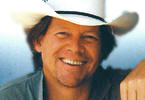An Inconvenient Witness - Kurt Sonnenfeld & the Emptied Vault of WTC 6
June 24, 2009
Kurt Sonnenfeld, the FEMA videographer who, for 29 days after 9-11, filmed the crime scene at the World Trade Center, including the sub-basement levels of WTC 6, was recently inteviewed by the Voltaire Network. His comments from June 22 about WTC 7 and WTC 6 and how inconvenient witnesses like himself have been silenced are extremely important to understand how so many people who know or saw something have been effectively silenced in a nation that claims to promote honesty and free speech.
Among other things at the WTC, Sonnenfeld saw that the huge vault beneath WTC 6 had been emptied, most likely during the previous night. This information is essential to understand the crater that was found in the U.S. Customs House (WTC 6) during the demolition of the South Tower. It appears to have been a tremendous blast that originated in the sublevel vault of WTC 6. Why? Probably to hide the fact that the vault had been cleaned out the night before.
Sonnenfeld is currently living in exile in Argentina, like me, a victim of malicious prosecution. Sonnenfeld is "an inconvenient witness" -- an honest man who saw (and knows) too much. This is another major breakthrough in the struggle to find the truth about what really happened on 9-11.
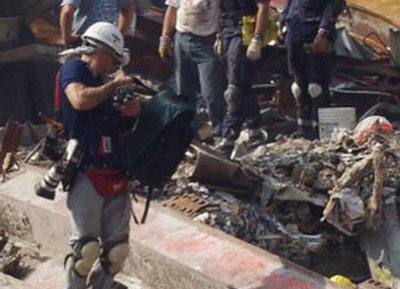
Sonnenfeld filming the evidence at the demolished World Trade Center
Kurt Sonnenfeld released his book El Perseguido (The Persecuted) on May 8, 2009, at the 35th Annual Buenos Aires Book Fair in Argentina, where he lives in exile since 2003. Sonnenfeld's book tells the history of his persecution at the hands of U.S. authorities over the course of more than seven years after his official mission to Ground Zero as FEMA’s videographer ... an experience that turned him into an inconvenient witness. To read more about Sonnenfeld's book, see: "Kurt Sonnenfeld: an inconvenient 9/11 witness" at: http://www.voltairenet.org/article160666.html

Kurt Sonnenfeld
Read the exclusive interview with Sonnenfeld at: 9/11 FEMA videographer at Ground Zero goes public
See: http://www.voltairenet.org/article160636.html
A key extract about the explosion in the basement of WTC 6 follows:
Kurt Sonnenfeld: What happened with Building 7 is incredibly suspicious. I have video that shows how curiously small the rubble pile was, and how the buildings to either side were untouched by Building Seven when it collapsed. It had not been hit by an airplane; it had suffered only minor injuries when the Twin Towers collapsed, and there were only small fires on a couple of floors. There’s no way that building could have imploded the way it did without controlled demolition. Yet the collapse of Building 7 was hardly mentioned by the mainstream media and suspiciously ignored by the 911 Commission.
Voltaire: Reportedly, the underground levels of WTC7 contained sensitive and undoubtedly compromising archival material. Did you come across any of it?
Kurt Sonnenfeld: The Secret Service, the Department of Defense, the Federal Bureau of Investigation, the Internal Revenue Service, the Securities and Exchange Commission and the Office of Emergency Management’s “Crisis Center” occupied huge amounts of space there, spanning several floors of the building. Other federal agencies had offices there as well. After September 11, it was discovered that concealed within Building Seven was the largest clandestine domestic station of the Central Intelligence Agency outside of Washington DC, a base of operations from which to spy on diplomats of the United Nations and to conduct counterterrorism and counterintelligence missions.
There was no underground parking level at Seven World Trade Center. And there was no underground vault. Instead, the federal agencies at Building Seven stored their vehicles, documents and evidence in the building of their associates across the street. Beneath the plaza level of US Customs House (Building 6) was a large underground garage, separated off from the rest of the complex’s underground area and guarded under tight security. This was where the various government services parked their bomb-proofed cars and armored limousines, counterfeit taxi cabs and telephone company trucks used for undercover surveillance and covert operations, specialized vans and other vehicles. Also within that secured parking area was access to the sub-level vault of Building 6.
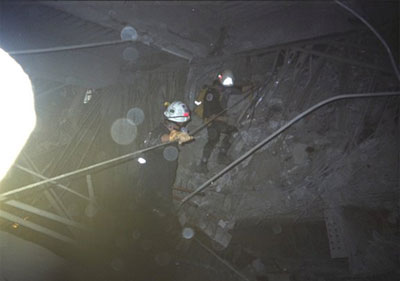
Sonnenfeld approaching the entrance to the sub-level areas of Building 6.
THE EMPTIED VAULT OF WTC 6
When the North Tower fell, the US Customs House (Building 6) was crushed and totally incinerated. Much of the underground levels beneath it were also destroyed. But there were voids. And it was into one of those voids, recently uncovered, that I descended with a special Task Force to investigate. It was there we found the security antechamber to the vault, badly damaged. At the far end of the security office was the wide steel door to the vault, a combination code keypad in the cinderblock wall beside it. But the wall was cracked and partially crumbled, and the door was sprung partially open. So we checked inside with our flashlights. Except for several rows of empty shelves, there was nothing in the vault but dust and debris. It had been emptied. Why was it empty? And when could it have been emptied?
Voltaire: Is this what set alarm bells ringing for you?
Kurt Sonnenfeld: Yes, but not immediately. With so much chaos, it was difficult to think. It was only after digesting everything that the “alarm bells” went off.
Building Six was evacuated within twelve minutes after the first airplane struck the North Tower. The streets were immediately clogged with fire trucks, police cars and blocked traffic, and the vault was large enough, 15 meters by 15 meters by my estimate, to necessitate at least a big truck to carry out its contents. And after the towers fell and destroyed most of the parking level, a mission to recover the contents of the vault would have been impossible. The vault had to have been emptied before the attack.
I’ve described all of this extensively in my book, and it’s apparent that things of importance were taken out of harm’s way before the attacks. For example, the CIA didn’t seem too concerned about their losses. After the existence of their clandestine office in Building Seven was discovered, an agency spokesman told the newspapers that a special team had been dispatched to scour the rubble in search of secret documents and intelligence reports, though there were millions, if not billions of pages floating in the streets. Nevertheless, the spokesman was confident. “There shouldn’t be too much paper around,” he said.
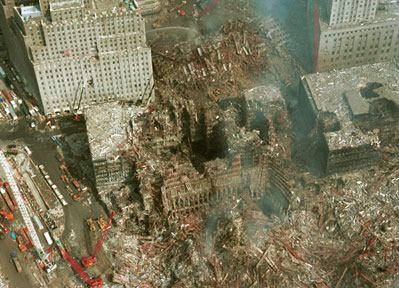
The exploded remains of the destroyed U.S. Customs House (WTC 6)
And Customs at first claimed that everything was destroyed. That the heat was so intense that everything in the evidence safe had been baked to ash. But some months later, they announced that they had broken up a huge Colombian narco-trafficking and money-laundering ring after miraculously recovering crucial evidence from the safe, including surveillance photos and heat-sensitive cassette tapes of monitored calls. And when they moved in to their new building at 1 Penn Plaza in Manhattan, they proudly hung on the lobby wall their Commissioner’s Citation Plaque and their big round US Customs Service ensign, also miraculously recovered, in pristine condition, from their crushed and cremated former office building at the World Trade Center.
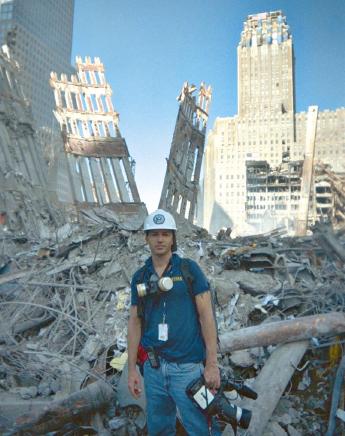
Kurt Sonnenfeld in the rubble of the WTC
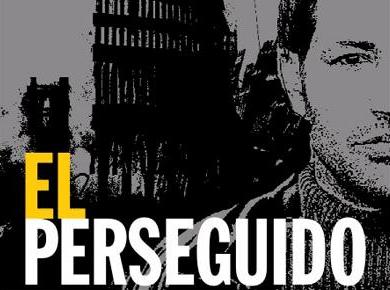
Sonnenfeld's recently released book, The Persecuted
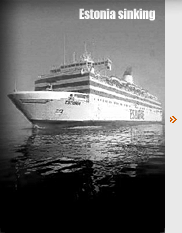

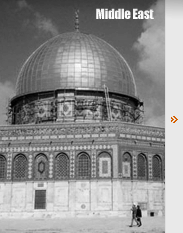
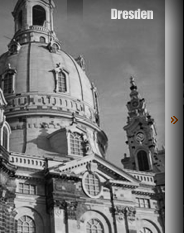

 9-11 Archive 2009
9-11 Archive 2009 An Inconvenient Witness - Kurt Sonnenfeld & the Emptied Vault of WTC 6
An Inconvenient Witness - Kurt Sonnenfeld & the Emptied Vault of WTC 6


